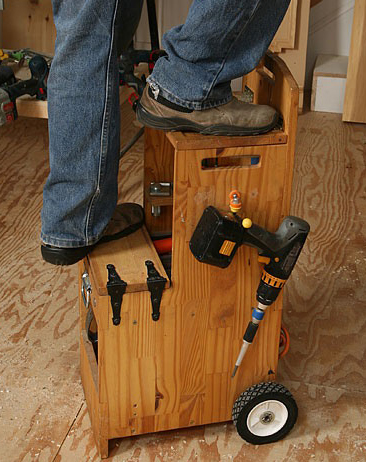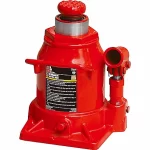What Are Tool Box Wheels?
Tool box wheels, also known as caster wheels, are small wheels designed to be attached to the bottom of tool boxes, cabinets, or other heavy equipment. Their primary purpose is to provide mobility and easy transportation of these items, allowing users to move them from one location to another without the need for excessive lifting or carrying.
Tool box wheels come in various types and designs to cater to different needs and applications. The most common types include:
- Rigid Caster Wheels: These wheels are fixed in one direction and do not swivel. They are ideal for straight-line movement and provide excellent load-bearing capacity.
- Swivel Caster Wheels: These wheels can rotate 360 degrees, allowing for easy maneuvering in tight spaces and around corners. They are commonly used on tool boxes that require frequent repositioning.
- Locking Caster Wheels: These wheels feature a locking mechanism that prevents them from rolling or swiveling when engaged. This feature is useful for securing tool boxes in place once they are in the desired position.
- Pneumatic Caster Wheels: These wheels have air-filled tires, similar to those found on bicycles or wheelbarrows. They provide excellent shock absorption and are suitable for use on rough or uneven surfaces.
Tool box wheels are typically made from durable materials such as rubber, polyurethane, or nylon, ensuring long-lasting performance and resistance to wear and tear. They come in various sizes and load capacities to accommodate different tool box weights and applications.
Table of Contents
Benefits of Using Tool Box Wheels
Mobility is a significant advantage of equipping your tool box with wheels. With casters installed, you can effortlessly transport your tools and equipment from one location to another, saving time and effort. This mobility is particularly beneficial for professionals who frequently move between job sites or work in different areas of a facility.
Tool box wheels also promote better organization. By having your tools consolidated in a mobile unit, you can keep your workspace tidy and clutter-free. This not only enhances productivity but also reduces the risk of misplacing or losing essential tools, which can be costly and time-consuming to replace.
Furthermore, tool box wheels help protect your valuable tools from damage. Instead of carrying heavy loads or dragging tool boxes across rough surfaces, wheels allow you to move your tools smoothly and gently. This minimizes the chances of dropping or banging your tools, which can cause dents, scratches, or other forms of damage that may impair their functionality or lifespan.
Choosing the Right Wheels
Selecting the appropriate tool box wheels is crucial for ensuring smooth mobility, durability, and safety. Several factors should be considered when choosing the right wheels for your tool box.
Size: Tool box wheels come in various sizes, ranging from small casters suitable for lightweight tool boxes to larger wheels designed for heavy-duty applications. The size of the wheels should correspond to the weight and dimensions of your tool box. Larger wheels generally provide better stability and maneuverability, especially on uneven surfaces.
Weight Capacity: Each wheel has a specific weight capacity rating, which indicates the maximum load it can support. Exceeding this weight limit can lead to premature wear, wheel failure, or potential safety hazards. Ensure that the combined weight capacity of the wheels you choose is greater than the fully loaded weight of your tool box, including tools and accessories.
Swivel vs. Rigid: Tool box wheels can be either swivel or rigid. Swivel wheels, also known as casters, allow for multi-directional movement, making it easier to navigate tight spaces and maneuver around obstacles. Rigid wheels, on the other hand, are fixed in one direction and are typically used in combination with swivel wheels for improved stability and straight-line movement.
Material: Tool box wheels are available in various materials, each with its own advantages and drawbacks. Common materials include:
- Rubber: Rubber wheels offer good traction, noise reduction, and floor protection. They are suitable for both indoor and outdoor use but may not be as durable as other materials.
- Polyurethane: Polyurethane wheels are known for their durability, abrasion resistance, and ability to handle heavy loads. They are often used in industrial and commercial settings.
- Nylon: Nylon wheels are lightweight, resistant to chemicals and moisture, and provide a smooth rolling action. However, they may not be as durable as other materials.
- Steel: Steel wheels are extremely durable and suitable for heavy-duty applications. They offer excellent load-bearing capacity but can be noisy and may damage certain floor surfaces.
Consider the intended use and environment when selecting the appropriate wheel material to ensure optimal performance and longevity.
Installation and Mounting
Installing tool box wheels is a straightforward process, but it’s important to follow the proper steps to ensure safe and secure mounting. The first step is to determine the appropriate mounting locations on your tool box or cabinet. Most tool boxes have pre-drilled holes or designated areas for attaching wheels, but if not, you’ll need to carefully mark and drill the mounting holes yourself.
Once the mounting locations are established, you can begin attaching the wheels. Depending on the wheel type and tool box material, you may need to use bolts, screws, or other fasteners. It’s crucial to use the correct hardware and follow the manufacturer’s instructions for proper installation.
When mounting the wheels, ensure they are securely tightened and won’t come loose during use. You may want to apply a thread-locking compound or use lock washers to prevent the hardware from vibrating loose over time.
For added stability and safety, consider using brakes or locks on the wheels, especially if you plan to transport heavy loads or work on inclined surfaces. These features can prevent accidental rolling and provide a more secure working environment.
Finally, once the wheels are installed, test the mobility and maneuverability of your tool box. Make any necessary adjustments to ensure smooth rolling and easy navigation in your workspace.
Tool Box Wheel Materials
Tool box wheels are available in a variety of materials, each with its own set of advantages and disadvantages. The most common materials used for tool box wheels are plastic, rubber, and metal.
Plastic Wheels
Plastic wheels are lightweight, affordable, and resistant to corrosion. They are often made from high-density polyethylene (HDPE) or polypropylene (PP), which are durable and long-lasting. Plastic wheels are suitable for indoor use and smooth surfaces, but they may not provide sufficient traction on rough or uneven terrain.
Pros:
- Lightweight
- Affordable
- Corrosion-resistant
- Easy to clean
Cons:
- Limited traction on rough surfaces
- Not as durable as metal or rubber wheels
- Can crack or break under excessive weight or impact
Rubber Wheels
Rubber wheels offer excellent traction and shock absorption, making them ideal for rough terrain and uneven surfaces. They are also relatively quiet and provide a smooth ride. However, rubber wheels can be more expensive than plastic and may wear down faster, especially in harsh environments.
Pros:
- Excellent traction
- Shock-absorbing
- Quiet operation
- Suitable for rough terrain
Cons:
- More expensive than plastic
- Susceptible to wear and tear
- Can attract dirt and debris
Metal Wheels
Metal wheels, typically made from steel or aluminum, are incredibly durable and can withstand heavy loads and rough usage. They are often used in industrial and construction settings where durability is paramount. However, metal wheels can be heavy, noisy, and prone to corrosion if not properly maintained.
Pros:
- Extremely durable
- Can handle heavy loads
- Long-lasting
Cons:
- Heavy
- Noisy operation
- Susceptible to corrosion
- More expensive than plastic or rubber
When choosing the material for your tool box wheels, consider the intended use, weight capacity, and the environment in which they will be used. Plastic wheels may be suitable for light-duty applications and indoor use, while rubber or metal wheels are better suited for rough terrain, heavy loads, and outdoor environments.
Maintenance and Care
Proper maintenance and care are crucial for ensuring your tool box wheels remain in top condition and provide reliable service for years to come. Regular cleaning, lubrication, and inspection for damage are key steps to prolonging the lifespan of your tool box wheels.
Cleaning: Keeping your tool box wheels clean is essential for smooth operation and preventing premature wear. Dirt, debris, and grime can accumulate in the wheel bearings, causing increased friction and resistance. Use a soft-bristled brush and a mild degreaser or soap and water solution to gently scrub away any built-up grime. Avoid using harsh chemicals or abrasives that could damage the wheel materials.
Lubrication: Proper lubrication is vital for reducing friction and ensuring smooth rolling. Over time, the lubricant in the wheel bearings can dry out or become contaminated, leading to increased resistance and wear. Consult your manufacturer’s recommendations for the appropriate lubricant type and application frequency. Typically, a high-quality bearing grease or lightweight machine oil is recommended for tool box wheels.
Inspecting for Damage: Regularly inspect your tool box wheels for signs of damage or wear. Look for cracks, splits, or excessive tread wear on the wheel itself. Check the bearings for any roughness, grinding, or excessive play. If you notice any significant damage or excessive wear, it’s best to replace the affected wheel or bearing to prevent further issues and ensure safe operation.
By following these maintenance and care steps, you can help extend the life of your tool box wheels and keep your tools and equipment mobile and easily accessible.
Top Tool Box Wheel Brands
When it comes to tool box wheels, several brands stand out as industry leaders, renowned for their quality, durability, and innovative designs. These brands have built a reputation for excellence, catering to the needs of professionals and DIY enthusiasts alike.
Milwaukee Tool: Milwaukee Tool is a household name in the tool industry, known for its rugged and reliable products. Their tool box wheel lineup includes heavy-duty options designed to withstand the toughest job site conditions. Milwaukee’s wheels feature robust construction, smooth-rolling bearings, and a wide range of sizes to accommodate various tool box dimensions.
DeWalt: DeWalt has earned a solid reputation for producing high-performance tools and accessories. Their tool box wheels are no exception, offering a combination of strength and maneuverability. DeWalt’s wheels are available in various materials, including rubber and polyurethane, ensuring a secure grip on different surfaces and minimizing the risk of slipping or marking floors.
Husky: Husky, a brand owned by Home Depot, has carved a niche for itself in the tool storage market. Their tool box wheels are known for their affordability and versatility. Husky offers a diverse range of wheel options, from basic models to heavy-duty variants designed for industrial use. Their wheels are easy to install and maintain, making them a popular choice among DIYers and professionals alike.
Craftsman: Craftsman, a brand with a long-standing tradition in the tool industry, offers a comprehensive lineup of tool box wheels. Their wheels are designed with durability and functionality in mind, featuring robust construction and smooth-rolling capabilities. Craftsman’s wheels are compatible with various tool box models, ensuring a seamless integration and hassle-free mobility.
Gator Grip: Gator Grip is a specialized brand focusing on tool box wheels and accessories. Their wheels are renowned for their exceptional grip and traction, ensuring secure maneuverability even on slippery or uneven surfaces. Gator Grip’s wheels are available in different sizes and materials, catering to a wide range of tool box weights and applications.
These top tool box wheel brands have earned their reputation through years of innovation, quality craftsmanship, and a commitment to meeting the diverse needs of professionals and DIY enthusiasts alike. Whether you prioritize durability, maneuverability, or affordability, these brands offer a wide range of options to enhance the mobility and functionality of your tool box.
Tool Box Wheel Accessories
Tool box wheels can be enhanced with various accessories to improve their functionality, durability, and safety. Among the most popular accessories are brakes, bearing protectors, and tread covers.
Brakes: Brakes are essential for tool boxes on wheels, especially when transporting heavy loads or working on inclined surfaces. They provide control and prevent the tool box from rolling away unintentionally. Brakes can be foot-operated or hand-operated, depending on the user’s preference and the specific design of the tool box.
Bearing Protectors: Bearing protectors are designed to shield the wheel bearings from dirt, debris, and moisture, which can cause premature wear and failure. These protectors are typically made of durable materials, such as rubber or plastic, and fit snugly over the wheel bearings, creating a barrier against contaminants.
Tread Covers: Tread covers are removable or permanent coverings that fit over the wheel treads. They serve multiple purposes, including protecting the treads from wear and tear, providing additional traction on slippery surfaces, and preventing the wheels from marking or damaging floors. Tread covers can be made of various materials, such as rubber, polyurethane, or even specialized coatings, depending on the intended use and environment.
These accessories not only enhance the performance and longevity of tool box wheels but also contribute to user safety and convenience. By investing in high-quality accessories, users can ensure their tool boxes remain mobile, stable, and reliable for years to come.
Tool Box Wheel Innovations
In recent years, tool box wheel design has seen several innovative advancements aimed at improving mobility, durability, and user convenience. One notable innovation is the introduction of advanced swivel mechanisms that allow for effortless maneuvering, even when the tool box is heavily loaded. These mechanisms often feature ball bearings or low-friction materials, enabling smooth 360-degree rotation and minimizing the effort required to change directions.
Another area of innovation is the use of new materials in wheel construction. Traditional rubber or plastic wheels are being replaced by high-performance polymers and composite materials that offer superior strength, impact resistance, and longevity. These advanced materials can withstand harsh jobsite conditions, extreme temperatures, and exposure to chemicals or solvents, ensuring that the wheels remain functional and reliable even in demanding environments.
Additionally, manufacturers are exploring innovative tread patterns and tire designs that enhance traction and stability on various surfaces. Some wheels now feature aggressive tread patterns or specialized compounds that provide superior grip on slippery or uneven terrain, minimizing the risk of slippage or tipping, even when carrying heavy loads.
Another notable innovation is the integration of braking systems into tool box wheels. These brakes can be foot-operated or lever-activated, allowing users to securely lock the wheels in place, preventing unintended movement and ensuring safety during transportation or when working on inclines.
Furthermore, some tool box wheel designs now incorporate suspension systems or shock-absorbing components to provide a smoother ride and reduce the impact of bumps or uneven surfaces on the contents of the tool box. This not only enhances user comfort but also helps protect delicate tools and equipment from potential damage.
As the demand for versatile and durable tool box solutions continues to grow, manufacturers are constantly exploring new materials, designs, and technologies to push the boundaries of wheel performance and functionality.
DIY and Custom Tool Box Wheels
For those who want a truly unique set of tool box wheels or have specific needs not met by off-the-shelf options, going the DIY or custom route can be a great solution. With some basic materials and tools, you can craft your own wheels tailored to your exact requirements.
One popular DIY approach is to repurpose other wheeled items like casters, rollers, or even skateboard wheels. These can be adapted to mount on your tool box, providing a cost-effective and creative solution. Customizing the wheel size, tread pattern, and materials allows you to optimize for factors like load capacity, terrain, and mobility.
If you have access to a workshop or fabrication tools, you can take the DIY process even further by crafting wheels entirely from scratch. Common materials used include wood, metal, plastic, or rubber, depending on the desired durability, weight, and traction. 3D printing has also opened up new possibilities for creating highly customized wheel designs.
For those seeking a more professional custom solution, many companies offer made-to-order tool box wheel services. These typically involve providing your specifications and requirements, and having a set of wheels manufactured to your exact needs. This route ensures a high-quality, precision-engineered product but comes at a higher cost.
Whether going the DIY or custom route, be sure to carefully consider factors like weight capacity, wheel diameter, width, bearing quality, and materials to ensure your custom wheels meet your needs and perform reliably. With some creativity and attention to detail, you can craft a truly one-of-a-kind set of wheels for your tool box.



